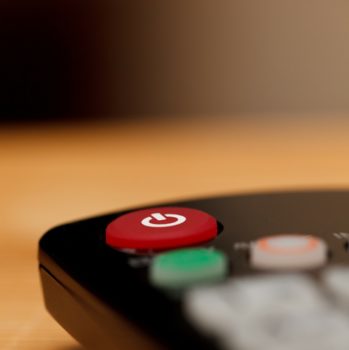Making Assumptions on Millennial Media Consumption Could Cost Brands
by Lindsay Rowntree on 5th May 2017 in News

The millennial age is bringing about a transformation in TV consumption. But don't assume millennials aren't watching. Writing exclusively for ExchangeWire, Andy Nobbs, SVP sales, 4C EMEA, explains how brands should look to complement TV investment when targeting millennial audiences, not replace it.
Last month, Adidas chief executive Kasper Rorsted announced that the brand is to cut TV advertising in the hope to become more digitally focused. The brand felt that their younger customers, a crucial demographic for the sports line, were simply not watching as much TV as they once had. With on-demand TV at their fingertips, there’s no doubt that how TV content is consumed is transforming. But, this move is certainly not a reflection of the power of TV ads. In this age, asking any channel to work alone is an iffy proposition.
We know from our own insights that millennials have not stopped watching TV; they are just watching it differently with more devices in more places. With that in mind, improving the ROAS (return on ad spend) is rarely a rip and replace exercise; but, rather, it’s about using all the available channels to build a clearer picture of your audience segments and a thorough map of all the available touchpoints.
Making assumptions is risky business
For brands, successful advertising is all about being in the right place and the right time. While it may seem like consumers are shifting their habits to having their head buried in a smartphone, consumers still spend an average of 35 hours per week watching live and time-shifted television.
However, an ever-growing challenge of consumer behaviour is the simple home truth that we very rarely sit through a one-hour TV show without checking our social media channels, especially during the ad breaks. But brands shouldn’t take this change in behaviour as a reason to cut TV spend altogether.
As consumers become predictably unpredictable, marketers simply have had to get savvier when it comes to placing ads, not cut their chances by cutting out mediums. To succeed, brands need to get to know their consumers’ online and offline behaviours when watching TV and make the connection between these two worlds.
For example, FitBit customers are 19x more likely to engage with The Great British Bake Off on Twitter. Knowing this, FitBit could schedule a TV ad to play in the break. While this is a great use of social insights, what would boost brand engagement further would be if FitBit were to sync social ads to run alongside their TV campaign. This double-pronged approach is guaranteed to boost engagement and cover two consumption behaviours – watching TV while posting on social media.
Long live TV
TV, as a medium, will continue to stay king. There is still no better format for delivering long-form storytelling that appeals to the senses through sight, sound, and motion. However, it is imperative brands wise up to changing consumer behaviour and adapt campaigns to remain connected with their consumers.
Knowing what your consumers are watching on TV and engaging with on social media allows brands to grab the attention of TV viewers distracted by their smartphones who are scrolling through social feeds in a meaningful way. For example, during a football match, sports brands can personalise their social ads with an update of the score in the creative. New technology enables this to be a simple execution and become an always-on strategy.
By adding this extra element of relevance, brands are much more likely to grab the attention of the right audiences, at the right time, in the right place. It’s about looking at the bigger picture and recognising that marketing strategy and brand engagement is now defined by real-time influences – i.e. the football score.
As more screens are added to our daily lives, brands need to be able to keep pace and shout the loudest, without risking consumer relationships by becoming a pest. That’s why it’s imperative they hone their efforts on the moments that will drive buyers through the purchase funnel quickly and unobtrusively.
Reliable results from unreliable audiences
Brands cannot rely on just one channel to make a meaningful impact. The outdated view that 'x-many million' have seen an advert on TV is a dangerous way to measure brand impact. Social data must be considered in understanding how people are responding to a TV advert and how well a brand is driving consumers to purchase.
Taking a multichannel approach improves both TV and social so that 1 + 1 = 3. Not only can TV placements and creative be optimised by understanding how people are responding on social, but pinpoint targeting and precise delivery of social ads can drive amplification of a brand’s TV advert.
Furthermore, by mining social engagement behaviour, a brand can discover unexpected audiences, as well as when and where they can be reached on TV. The result is brands are no longer 'spraying and praying'. Instead, they're delivering meaningful brand messages to lucrative audiences.
As consumers increasingly split their time between different channels, let alone the disparate physical and online worlds, of course brands cannot be sure their expensive TV ads will catch every eye of their desired audience. It’s about making all mediums work hard to support each other. Tackling this issue first, rather than the cost sheet, is the thinking that will define high returns from here on out.







Follow ExchangeWire